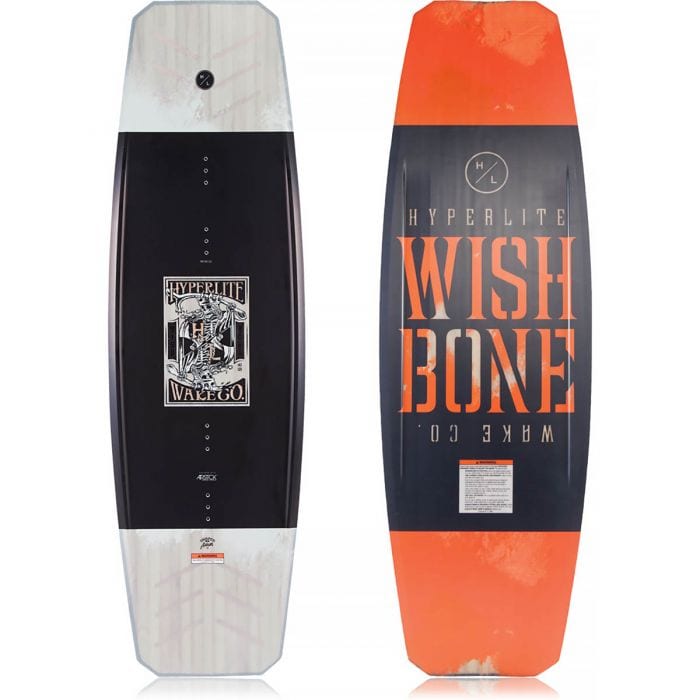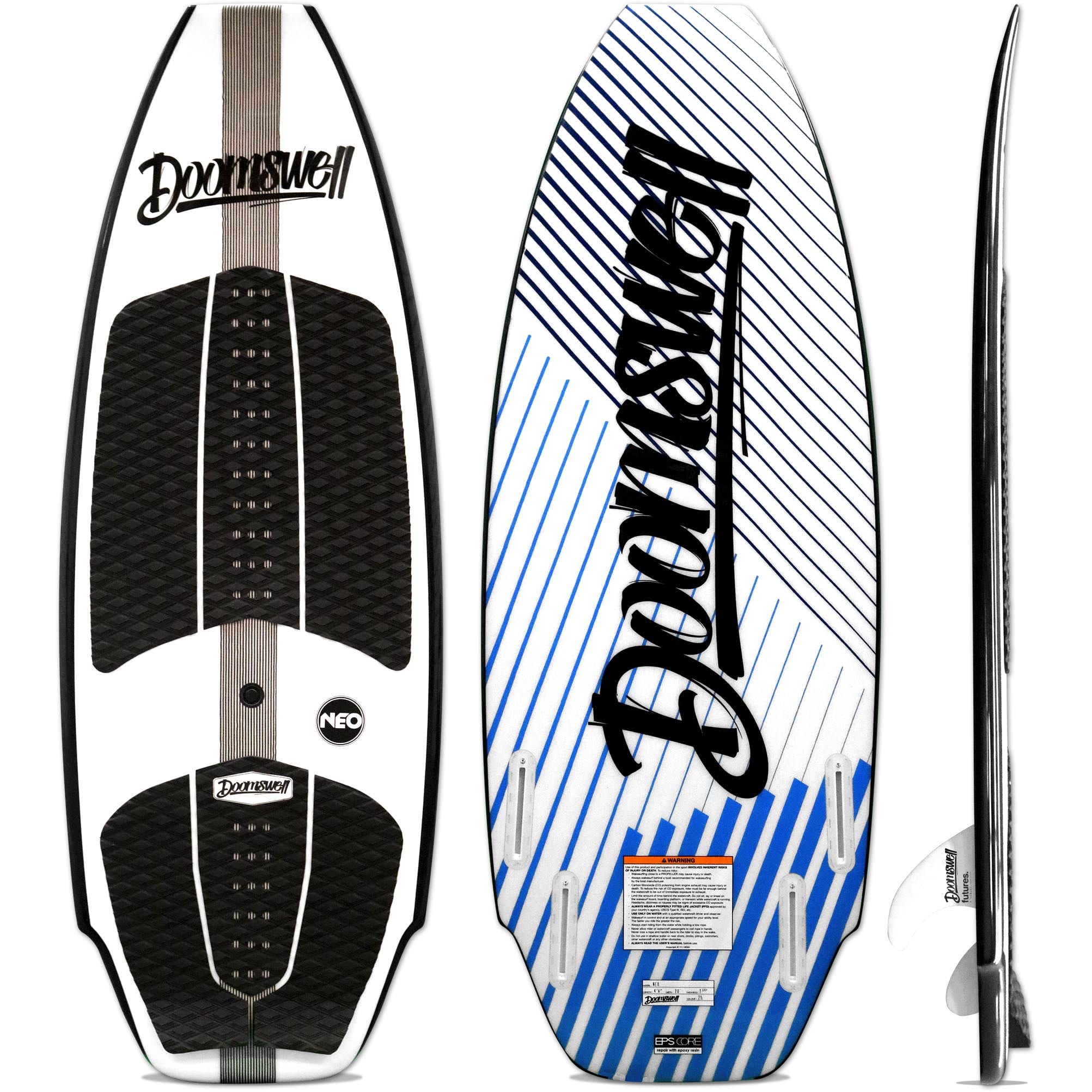One of the things we hear all the time at the shop during the summer is the statement, ”We’d like a board that the whole family can ride.” We’re always happy to recommend a board, be it a wakeboard or a surfboard, that theoretically could accommodate the whole family. However, there are some inherent disadvantages to the “one size fits all” approach. If you’re look to get the most out of your time on the lake this season and give everyone in the crew the best possible experience behind the boat, this one is for you! Let’s break down why size is such an important factor when considering a wake or surf board.
Wakeboard Sizing

Pictured: 2019 Hyperlite Wishbone Wakeboard
The obvious reason why one wakeboard likely cannot serve the whole family is the bindings. If your board has open toe boots, it likely can accommodate a range of three to four foot sizes, which means from children to adults you’re likely to have a gap. This could result in smaller riders trying to make use of huge, unresponsive boots that often come off with every fall. For riders with larger feet, it could mean squeezing into a boot that causes discomfort after a short amount of time and leave them wanting to get back in the boat.
In addition to the boots, the size of the board also plays more of a role in a riders success than you may think. Without diving too deep into the science, the surface area of a wakeboard, along with the riders weight, determine the effort it takes to get up and cruise on top of the water. Smaller, beginner riders will actually benefit from learning on a larger board due to the benefits of more surface area when learning to get up and the added stability of a larger board when learning to ride behind the boat. Though, unfortunately for larger riders, riding a board that is too small simply makes wakeboarding more tiring and less enjoyable. Not only does it take way more effort to get out of the water initially, but much more drag is created resulting in getting tired much quicker. To put it simply, adult riders need an adult sized board, and once kids get the hang of getting up on the board, they’ll soon require a light and responsive kids board in order to progress much further.
Wakesurf Board Sizing

Pictured: 2020 Doomswell Neo Wakesurf Board
In few other board sport is it more crucial to have the right size and style of board than wakesurfing. The board you ride can be the difference between spinning your first 360 or not even being able to drop the rope in wakesurfing, and it all comes down to two factors: buoyancy and shape. We’ve got another post that focuses on the best style and shape for you here: Choosing The Right Wakesurf Board, so for this section, we’re going to focus just on size.
When learning to surf in the traditional sense (you know, in the ocean), most experienced surfers will recommend that you learn on a longboard. Because of the huge surface area and buoyancy of a longboard, riders of all sizes can learn on a much more stable platform and ride surf a much smaller wave than would be possible on a short board. The same logic applies to wakesurfing. We’re certainly not creating an ocean-sized wave behind a boat, which means beginners will benefit immensely from learning on a larger, more buoyant board. The bigger the rider, the bigger (or more buoyant) the board should be.
This also applies to more skilled surfers, though not as much. In wakesurfing, learning proper weight distribution and pumping can make a world of difference in your ability to surf rope-less. Often, a more skilled rider will rider a shorter board due to their ability to use technique to keep up with the boat. There is however, still a limit to physics, and a more skilled rider will ultimately have to choose a board that has enough surface area to enable them to progress.
Finally, let’s talk about kids that surf. While adults tend to struggle staying in the wave without the rope at first, kids and small riders (let’s say 120lbs or less) often have the opposite problem. A surf wave as tall as an adult’s waist might be up to a kid’s chin, which means if they’re riding a board that’s too big they will likely have trouble controlling their speed. This can result in a constant battle to stay far enough back that the board is not touching the boat’s platform. As they progress beyond being able to get up and drop the rope, lighter riders will also require a board small and nimble enough to learn basic and more advanced tricks. All in all, if it’s your goal to help your kid fall in love with wakesurfing, you have much better odds if their board is sized for them.
